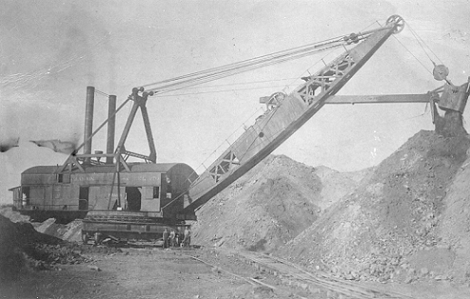 |
|||||||||
|
|||||||||
|
Construction and Technology
Source: CGA
Technology needs to be identified, evaluated, and shared so that anyone involved in protecting underground assets has an opportunity to use that technology for their own regional needs. This report from the CGA shares the collective knowledge about these technologies with the goal of furthering discussions, improvements, and better ways of using them. The CGA Technology Committee strives to expand upon and improve this annual report for all involved. Education is a powerful tool for change!
Source: RedShift
You’re on the construction site, outfitted in your Terminator-like robot suit that gives you exponential strength, letting you effortlessly lift hundreds of pounds as integrated sensors send your vitals and atmospheric data to the cloud.
Source: ConstructConnect
Concordia University in Montreal wants to lead the charge in driving the Canadian construction industry into the digital age. The school has launched a new Centre for Innovation in Construction and Infrastructure Engineering and Management (CICIEM) aimed at putting Industry 4.0 front-and-centre and getting companies and workers to embrace and adopt technology like drones, digital imaging and remote sensing applications.
Source: ConstructConnect
The key to spearheading change when it comes to technology is getting buy-in and making people aware of how the change will benefit them.
Source: Power
It is possible for companies to develop a solid strategy for choosing and rolling out technology. This article looks at specific examples, and helps companies assess what fits into their own strategic plan.
Safety and Technology
Source: Construction News
This product was designed to help with activities such as safety planning.
Autonomous Excavation Equipment
Source: Robotics Business Review
The International Union of Operating Engineers (IUOE) and Built Robotics today announced a multi-year strategic partnership agreement. The partnership will establish a training program to prepare the more than 400,000 IUOE members to oversee and manage robotic equipment, as well as work alongside autonomously operating vehicles.
Source: ConstructConnect
Fully-autonomous, robotic vehicles that excavate, grade, load, unload and drive across construction sites without direct human interaction are an ambitious dream for the future. However, closer within reach are equipment control systems called semi-autonomous tele-operations.
Source: Montreal Gazette
There will be a new type of worker on a Pomerleau construction site in Quebec as of Friday, a most unusual addition to the company’s staff -- a robot named Skynet Spot.
Source: Heavy Equipment Guide
A fleet of four updated machines will begin the year-long pilot program in March 2020 in Sweden, where it will be tested in a repetitive transport application.
Source: GX
There’s been a marked acceleration in contractor engagement and a desire to be involved in the advancement of the technological capabilities and testing of incremental solutions, particularly in light of workforce challenges and a heightened safety focus on job sites.
Source: Levelset
From shows like I-Robot and Silicon Valley, the idea of self-driving vehicles has been portrayed as a scary, futuristic, sci-fi invention. However, this future is closer than it seems - and safer.
Education
Telecommunications
Source: Financial Post
Rogers says the next-generation wireless network is now up and running, but nobody will actually be able to use it for a while, as there aren’t any devices authorized to use the Rogers network yet.
Source: The Standard
Rogers will build a 5G network on the Waterloo campus that will test network infrastructure, frequencies and applications in a real-world environment.
Historical Excavation Technology
Source: Farm Collector, Texas Final Drive, Mining Foundation SW
Nearly everyone who has ridden on an elevator has, if they looked up above the buttons for the floors, seen the name Otis. Otis Elevator Co. is the largest builder of elevators and escalators in the world today. Elisha Otis started the company in Yonkers, New York, in about 1853, and can be truly said to have made the modern high-rise skyscraper possible.
However, this story isn’t about Elisha Otis, but his mostly forgotten cousin, William Otis. Although he was two years younger than Elisha, William got into the inventing game much earlier. His invention was arguably more important, making possible the Panama Canal, as well as railroads, highways, dams and bridges all over the world. That same invention also made practical the large-scale mining of ores, coal, limestone and rock.
Source: Archaeology Travel
Beneath the streets of Exeter, England are what remains of a network of medieval tunnels built to supply the city with fresh water, starting in 1346! Just a few hundred years later, they had fallen into disrepair and became all but forgotten – until opening again as a tourist attraction in the 20th century. No other city in the United Kingdom has a tunnel system of this kind.
What did you think about the Technology Issue of The Tolerance Zone? We would love to hear your feedback! Comments can be sent to: office@orcga.com |
|||||||||
|


